7.2 The Hydrological Cycle
The Hydrologic Cycle (AKA: Water Cycle)
All water on the planet is connected through the hydrologic cycle. This cycle is a closed system, which means the volume of water on the planet today is the same as it always has been. No new water has been introduced to the planet and water has not left either – it has just changed where it is located and the form it has.
Water on the planet is constantly on the move. It travels from one location (called a reservoir or store) to the next through processes called flows. It is evaporated from the oceans, lakes, streams, the surface of the land, and plants (transpiration). It is transported in its gaseous form through the atmosphere by the wind and condenses to form clouds of water droplets or ice crystals. It falls to the Earth’s surface as rain or snow (precipitation) and flows through streams, into lakes, and eventually back to the oceans. Surface water, including water in streams and lakes, infiltrates the ground to become groundwater, a process called infiltration. Groundwater slowly flows through soils, surficial materials, and pores and cracks in the rock, a process called percolation. The groundwater flow paths can intersect with the surface and the water can then move back into streams, lakes and oceans or be taken up by soil and plants (Figure 1).

There are 332.5 million cubic miles of water on the planet and most of this is salt water (the oceans hold close to 97% of all water on the planet). Of the total freshwater, over 68 percent is locked up in ice and glaciers. Another 30 percent of freshwater is in the ground. Fresh surface-water sources, such as rivers and lakes, only constitute about 22,300 cubic miles (93,100 cubic kilometers), which is about 1/150th of one percent of total water. Yet, rivers and lakes are the sources of most of the water people use every day (Figure 2).
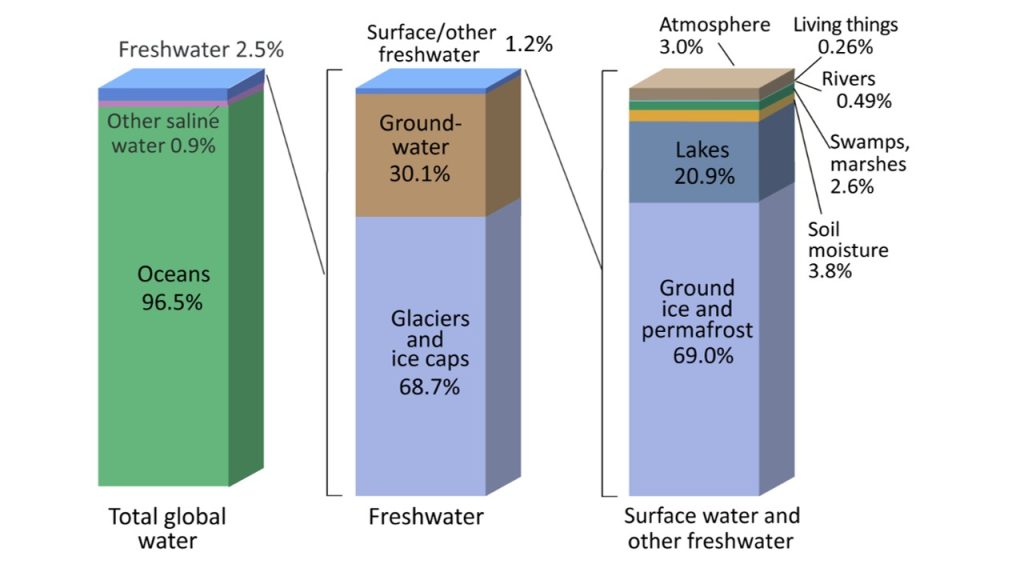
To put these percentages in perspective, pretend a one liter (1000 ml or about 4 cups) jug of water represents the entirety of Earth’s water supply (Figure 3). The 970 ml in the jug is all the saltwater on Earth. One regular sized ice cube (~20 ml) represents frozen freshwater (glaciers/ice caps), and two teaspoons (~10 ml) are groundwater. All the visible surface water on the planet (lakes/rivers/streams) is represented by the three drops of water being added by the eyedropper. The saltwater, frozen water, and most of the groundwater is not easily accessible/readily available water, which is why humans mainly rely on surface freshwater, which is only a tiny fraction of Earth’s water resources. This is why taking care to keep our water resources clean and use them sustainably is so important!

Water Diversion, Retention, and Withdrawal
Humans have found the need to divert or store water for a variety of reasons. The implications of this on water supply and ecosystems is immense. Here we will just briefly touch upon some of the major aspects of these practices.
Water diversions can include drainage and irrigation ditches, pumping for the purpose of irrigation, flood control, municipal and industrial water use, and flood control levees. Since these practices are so diverse and widespread, it can be difficult to assess the impact. However, some diversion projects can be massive in scale. Whole cities, such as Los Angeles, Phoenix, and Las Vegas, have been built which rely on water diverted from other areas.
Agriculture is one of the largest sources of water diversions. One emerging and contentious practice in Minnesota is tile drainage, which involves pumping groundwater from fields into local waterways for the purpose of drying crop fields. Local water management agencies have often been tasked with regulating these practices. Groundwater is also diverted as irrigation for the purpose of watering crops. Much of the U.S. agricultural system is dependent on irrigation. Groundwater depletion can result in subsidence (sinking of the ground), well failure, saltwater intrusions into wells, and, of course, a lack of groundwater for use by future generations.
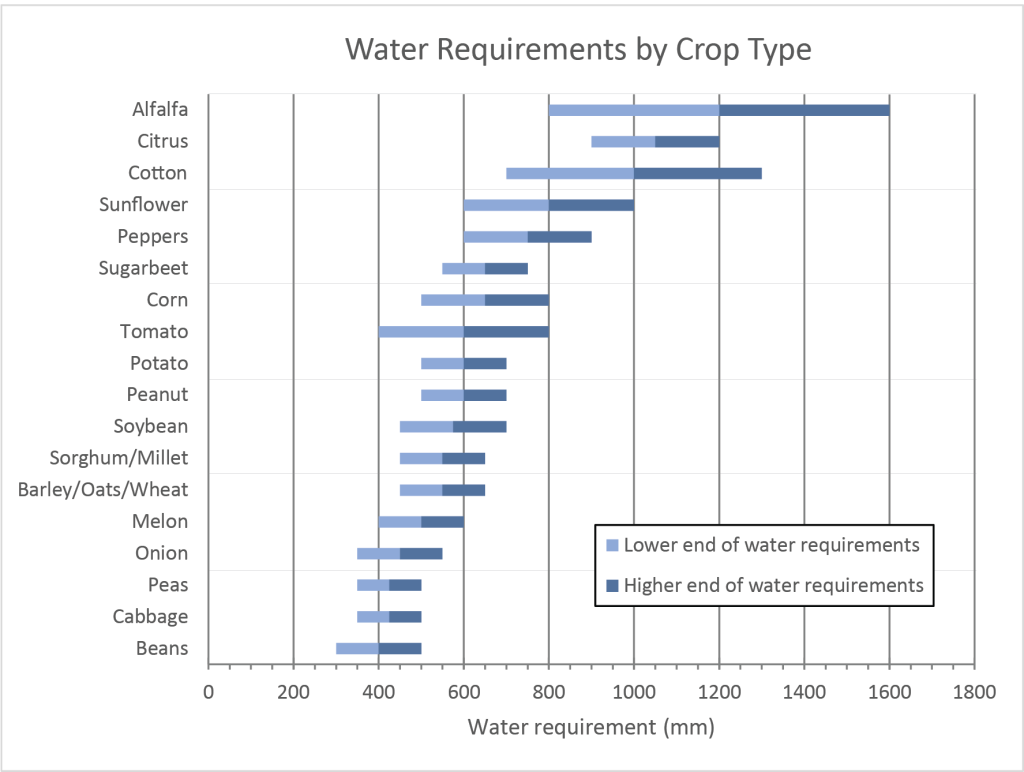
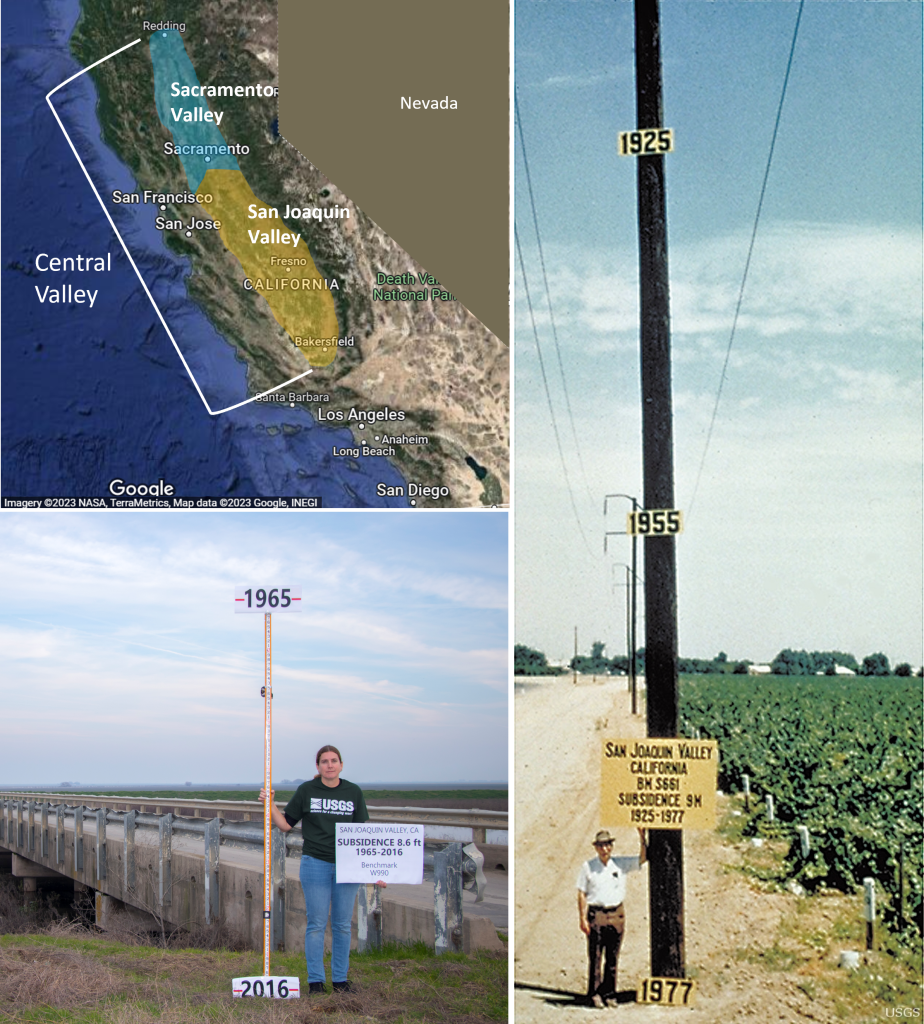
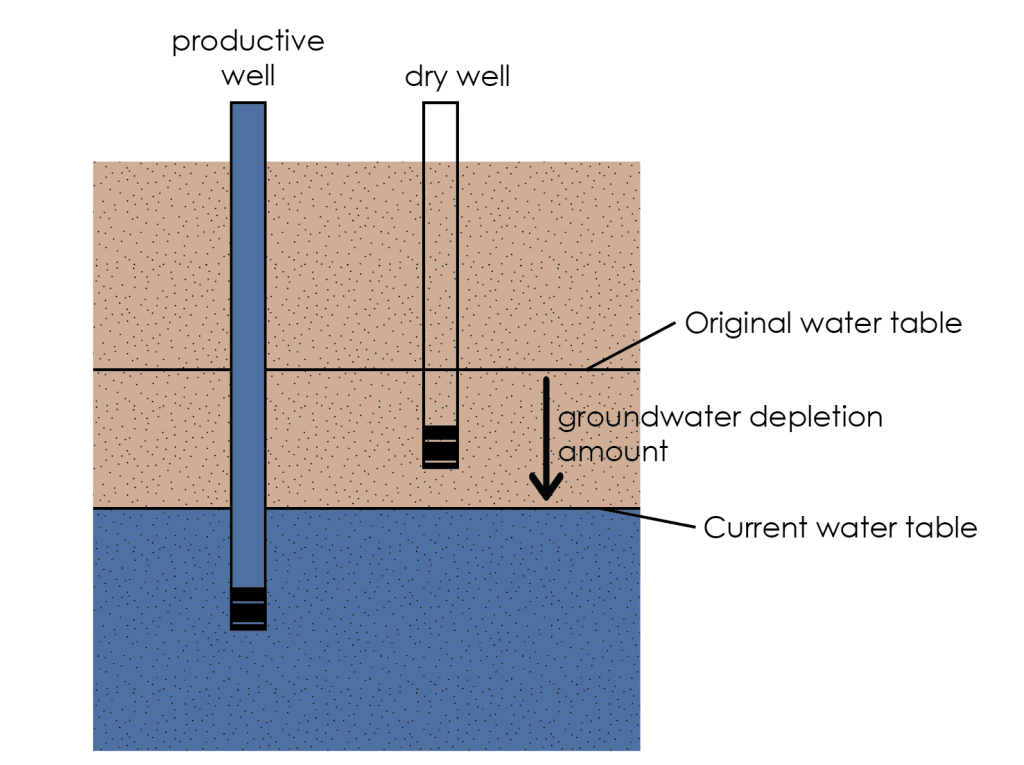
Wetlands play critical roles in hydrology and have huge ecological importance, providing hotspots of biodiversity, unique habitat, and resources to neighboring and migrating populations. However, these ecosystems have been extensively impaired, drained and destroyed for the purpose of agriculture, road construction, and urban development. In Minnesota, it is estimated that 50% of wetlands have disappeared. Local and state agencies have developed regulations to protect further impacts to wetlands. Federal agencies, such as the Army Corp of Engineers, are also responsible for enforcing laws related to wetland management. However, the interpretation of these laws is constantly changing, causing confusion.
Water retention, particularly in the form of large dams, can have many purposes. Dams have been constructed for the purpose of irrigation, municipal water supply, recreation, and hydropower. For example, the Colorado River has numerous dams, including the Hoover Dam. The ecological and hydrological impacts of these projects are huge, changing the nature of whole river systems. Because of these impacts, the U.S. has moved away from this practice and many existing dams are being targeted for removal. This topic will be revisited in the chapter discussing hydroelectric power.
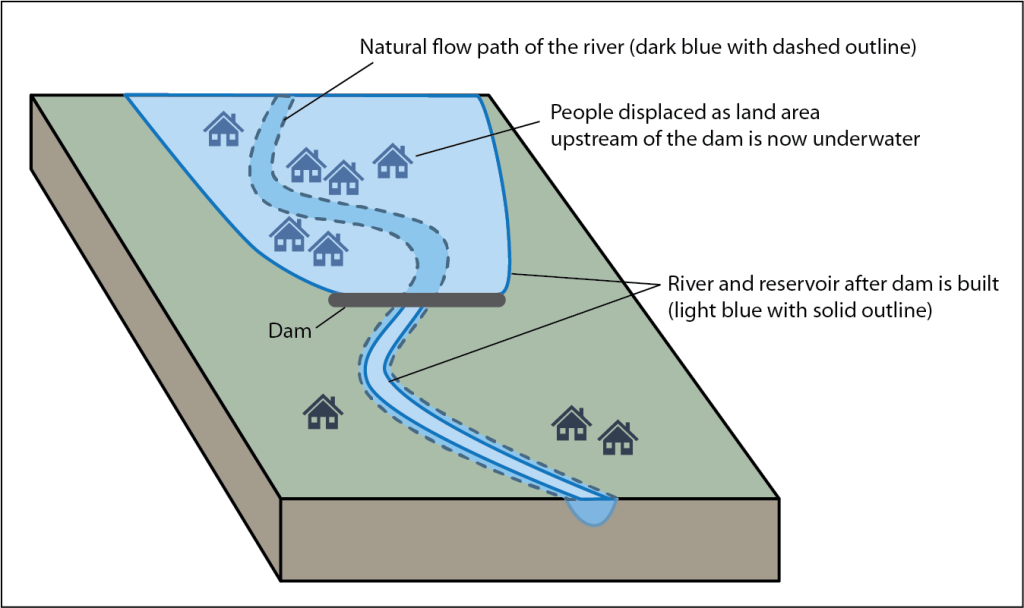
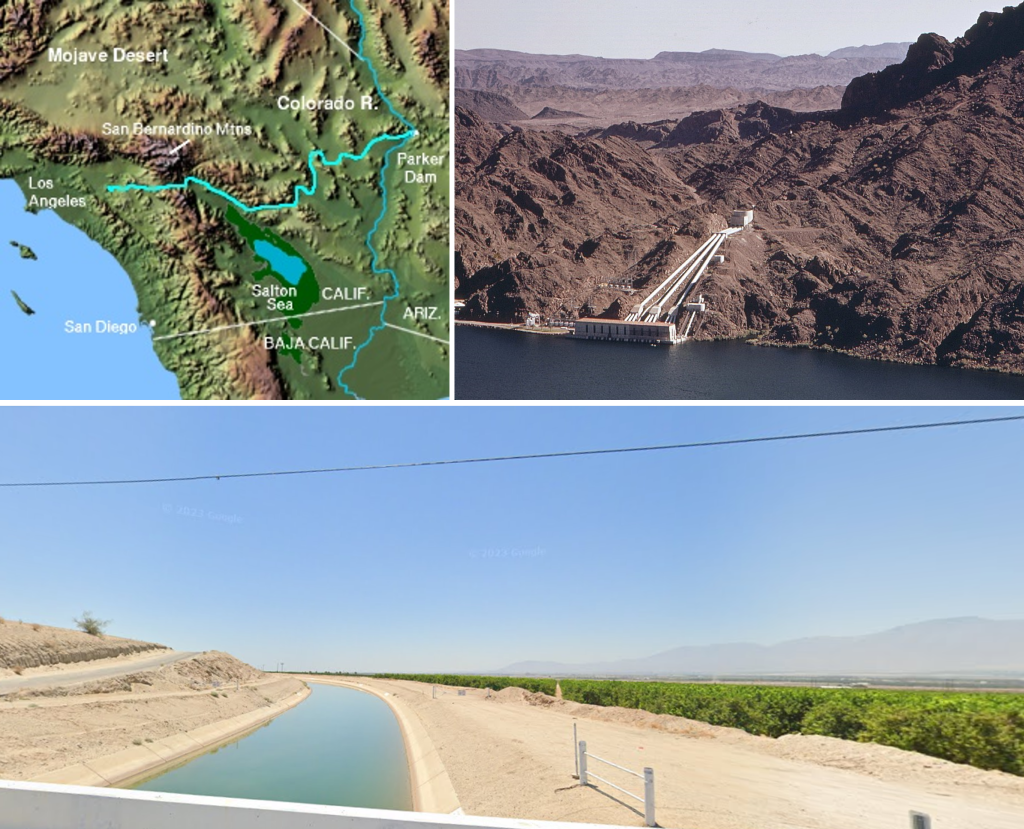
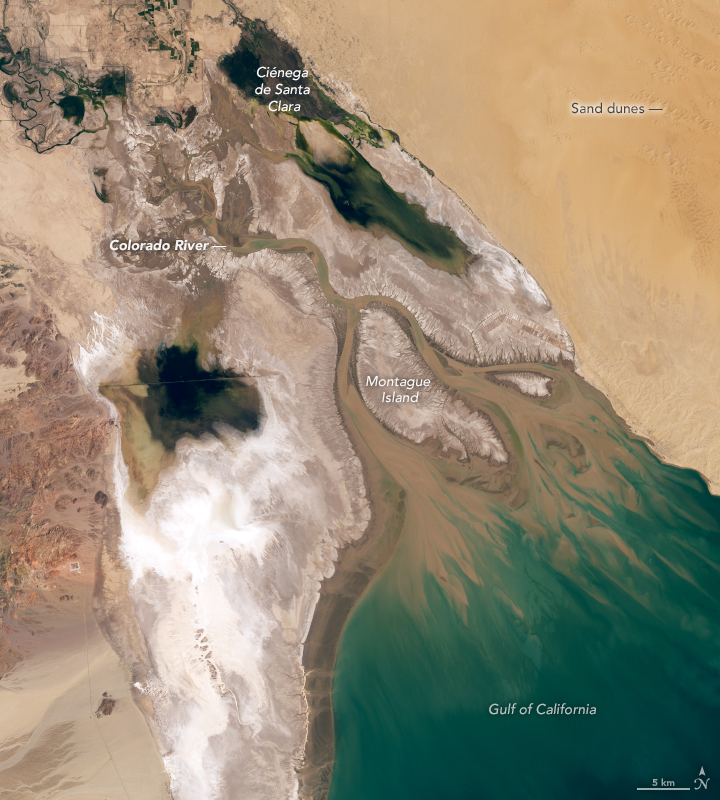
Inequitable Impacts of Groundwater Withdrawals for Irrigation
Long-term groundwater depletion and land subsidence has damaged thousands of public and private groundwater wells throughout the Central Valley. In some areas, due to long-term lowering of the water table, wells are no longer deep enough to reach groundwater. In other areas, wells are still deep enough to reach groundwater except during times of drought or overpumping by neighboring wells.
During drought conditions, the water diverted to the Central Valley via aqueducts for farms decreases, so farmers rely more heavily on pumping groundwater. Large farms and farms owned by large agricultural businesses have the economic resources available to install deep wells that reach far below the water table, ensuring the well will not run dry. These wells pump more groundwater than usual during a drought, which means the water table in the nearby area is artificially lowered in a cone shape as water is drawn into the pumping well (Figure 10). This cone shaped depression in the water table is aptly named the cone of depression and if this affects nearby wells, they will run dry. Such is the case with many residential drinking water supply wells in the Central Valley.
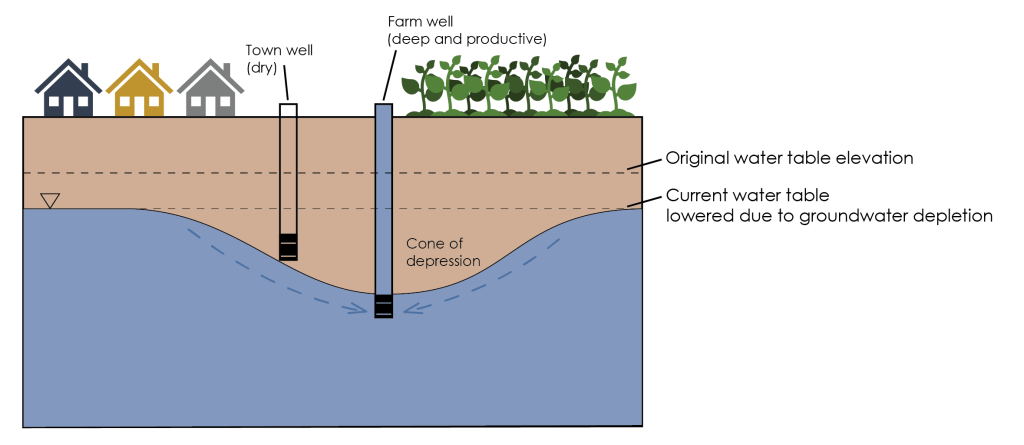
The districts that control pumping allowances in these areas have largely set pumping restrictions that address what growers want, while failing to address how this affects residential water supplies. The areas hardest hit by these conditions are rural communities in the Central Valley. These are largely comprised of lower income and Latino farm workers.
Attribution:
This section is cloned from Environmental Geology, by Lindsay J. Iredale, Normandale Community College, published using Pressbooks, under a CC BY-NC.SA 4. (Attribution-NonCommercial-ShareAlike 4.0 International; https://creativecommons.org/licenses/by-nc-sa/4.0/) . It may differ from the original.
Media Attributions
- Slide1
- Private: crop water needs
- Private: San Joaquin Valley
- Private: groundwater depletion © Lindsay Iredale is licensed under a CC BY (Attribution) license
- Private: dams and reservoirs
- Private: CRA
- Private: cone of depression © Lindsay Iredale is licensed under a CC BY (Attribution) license
